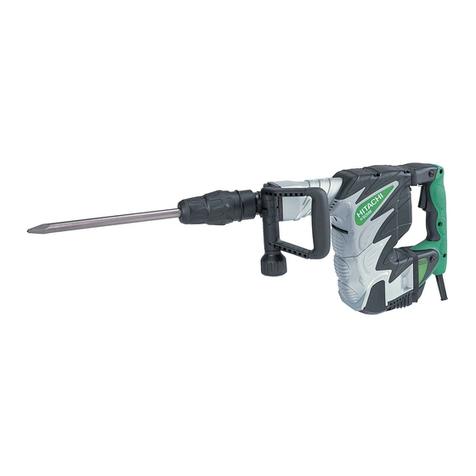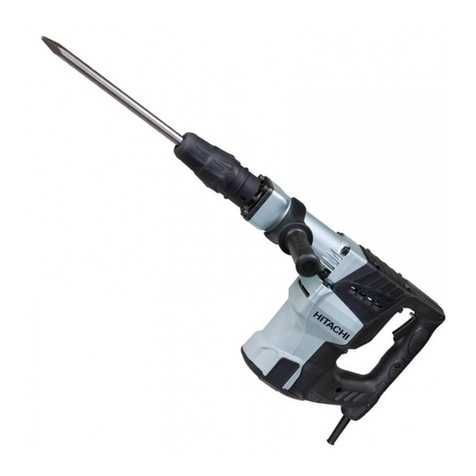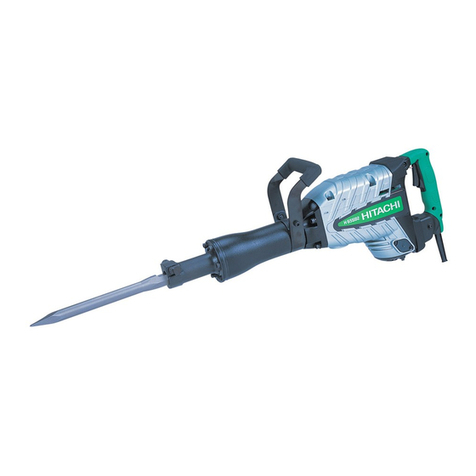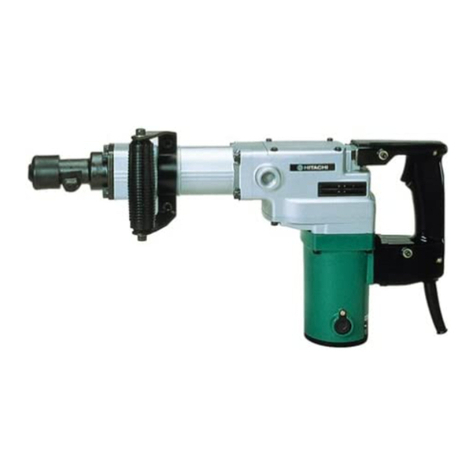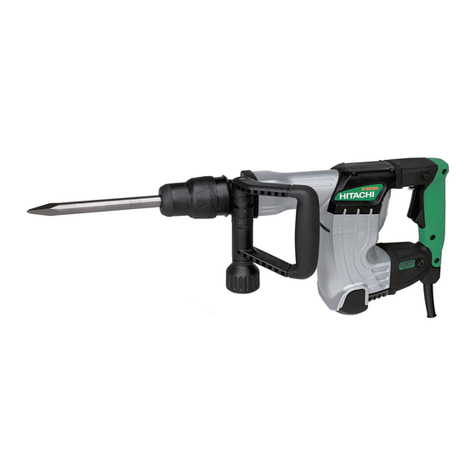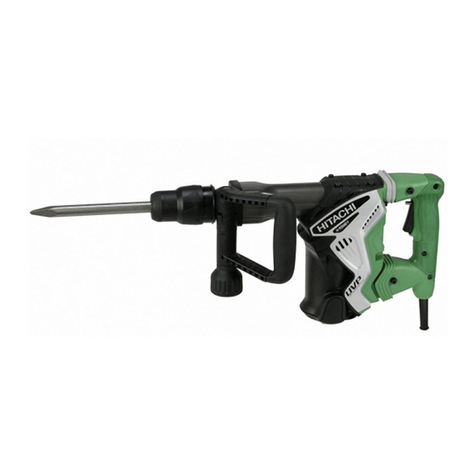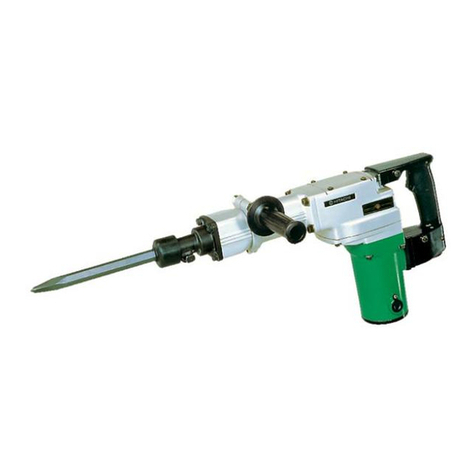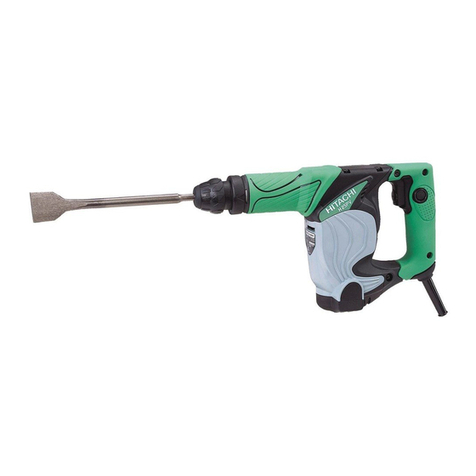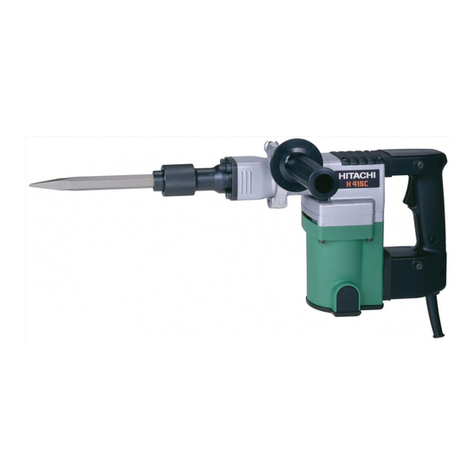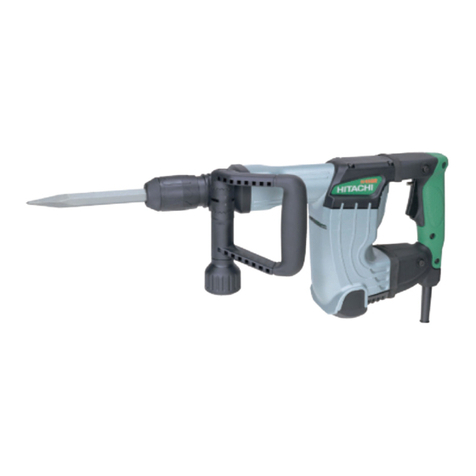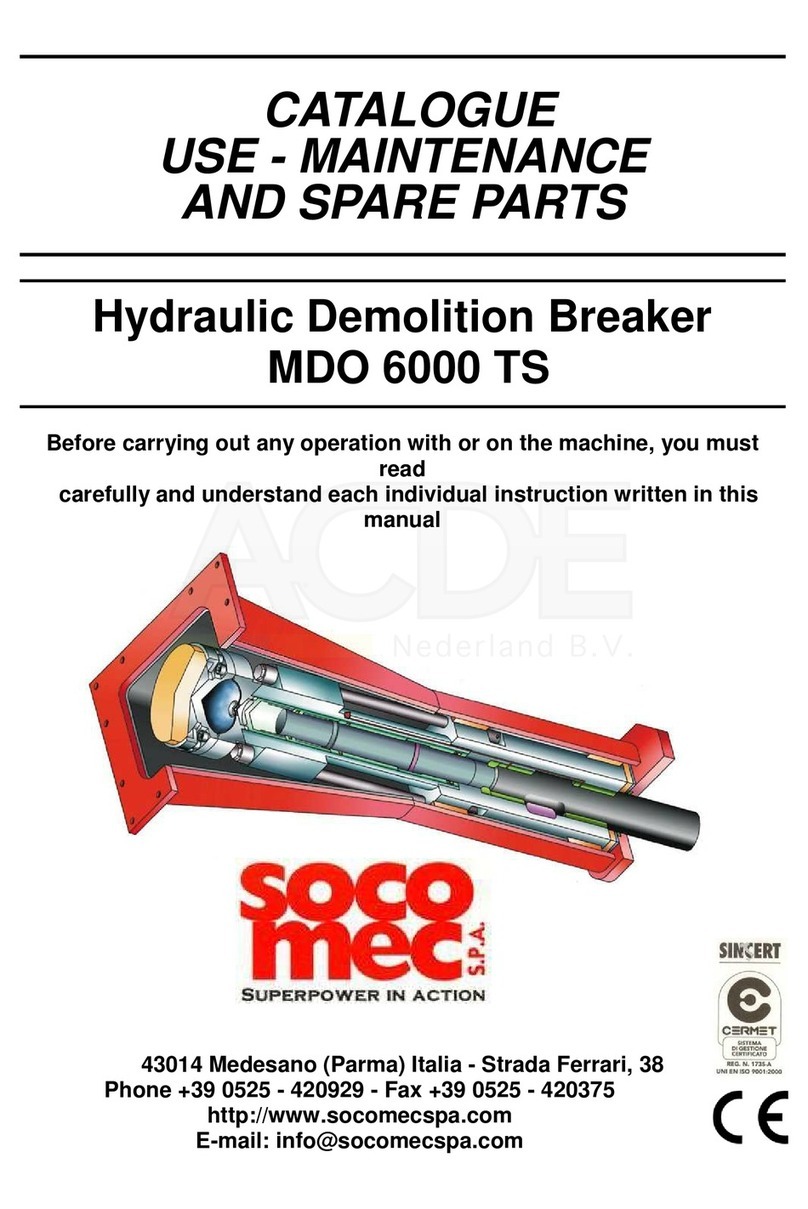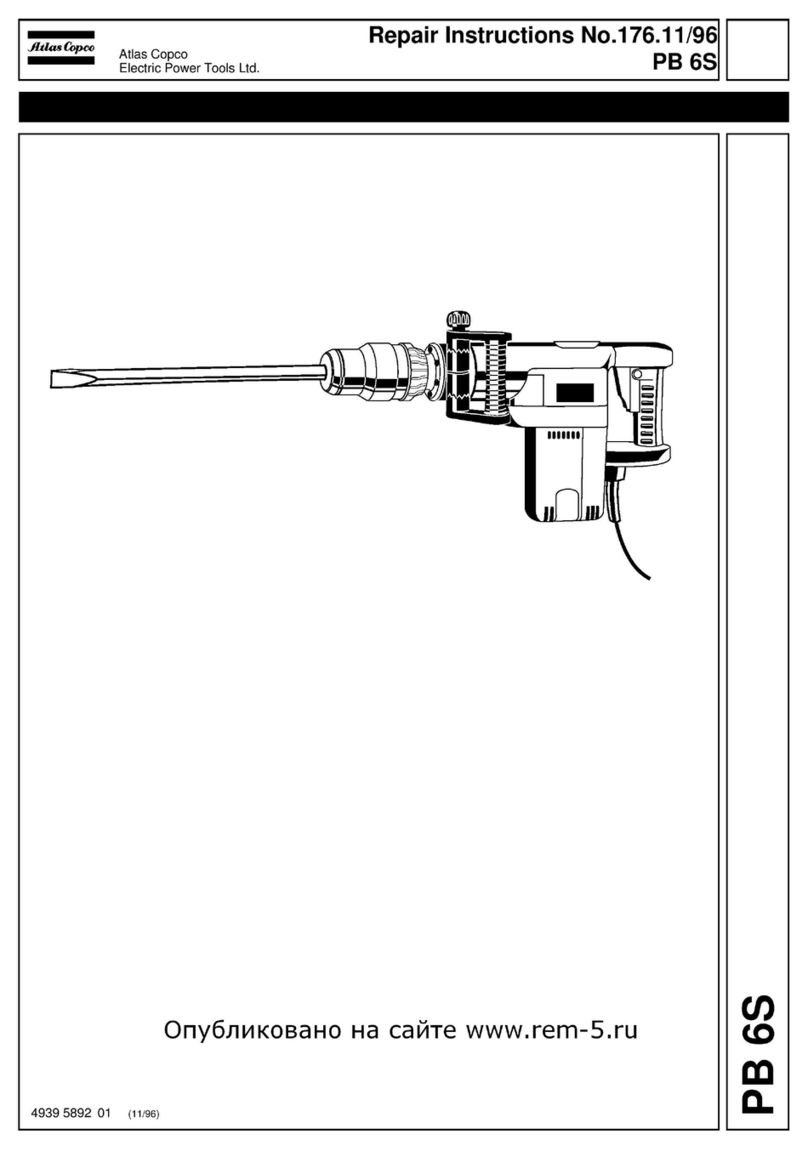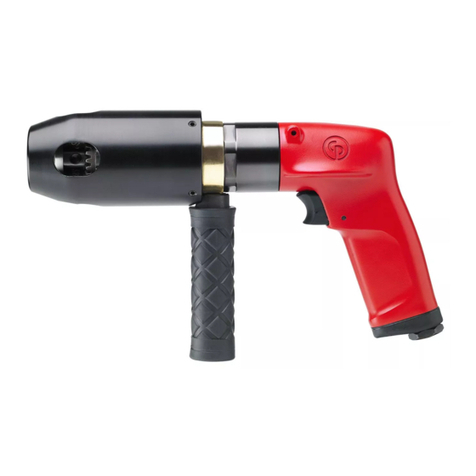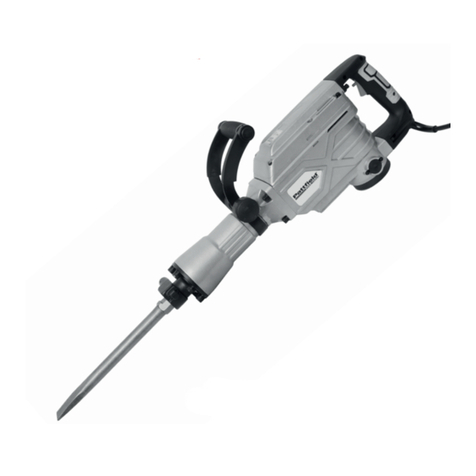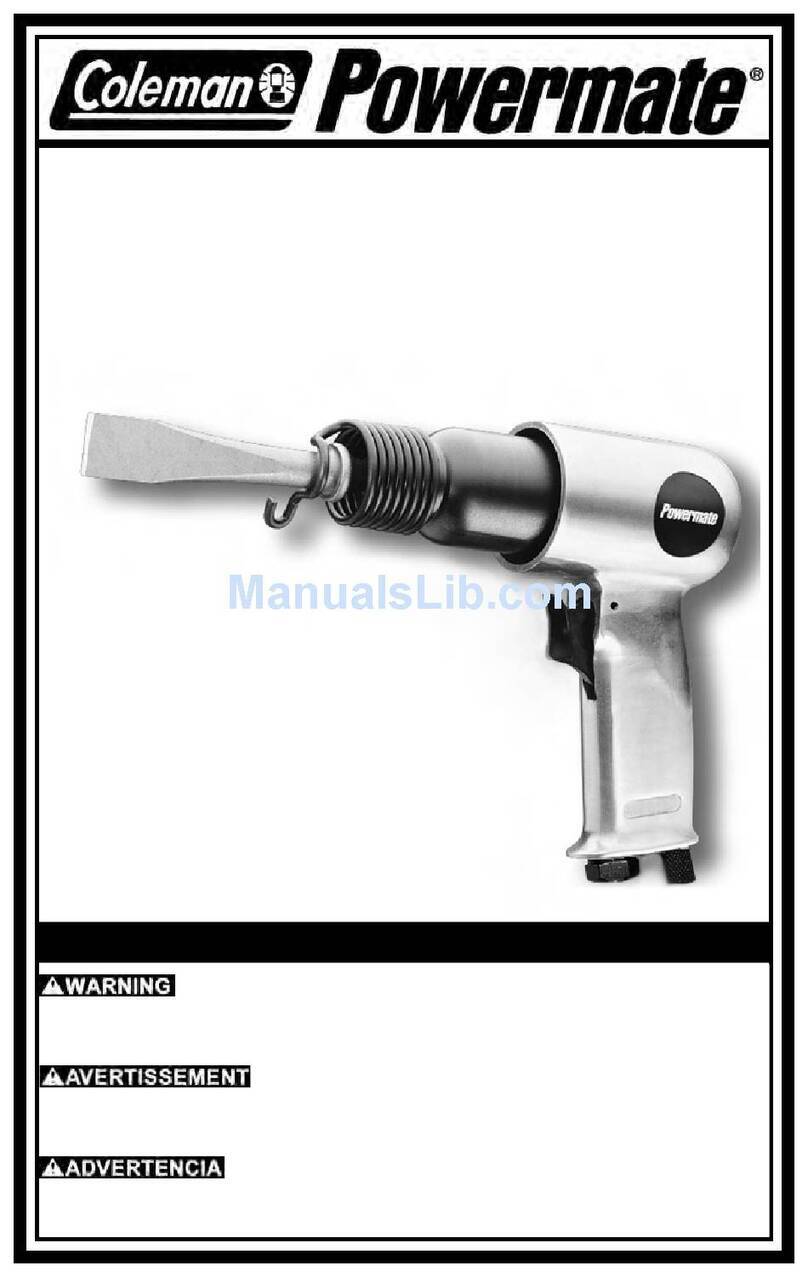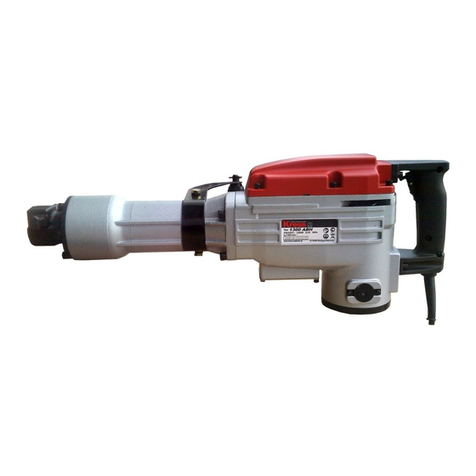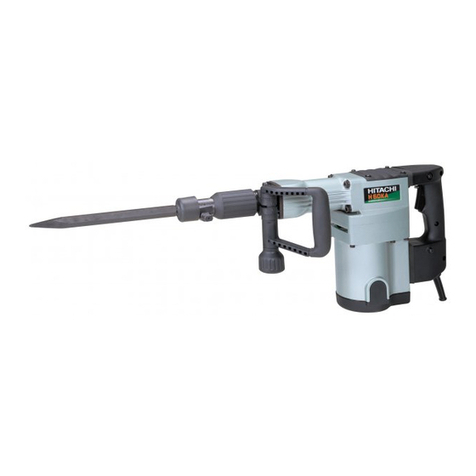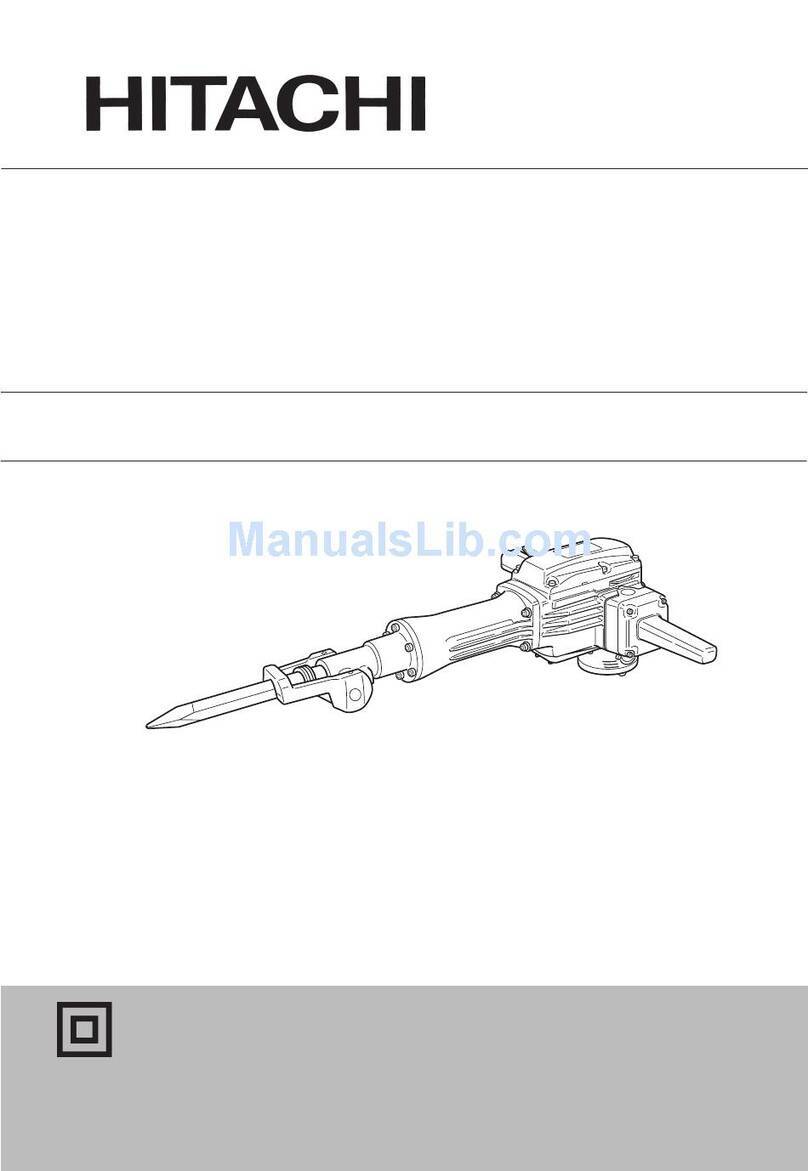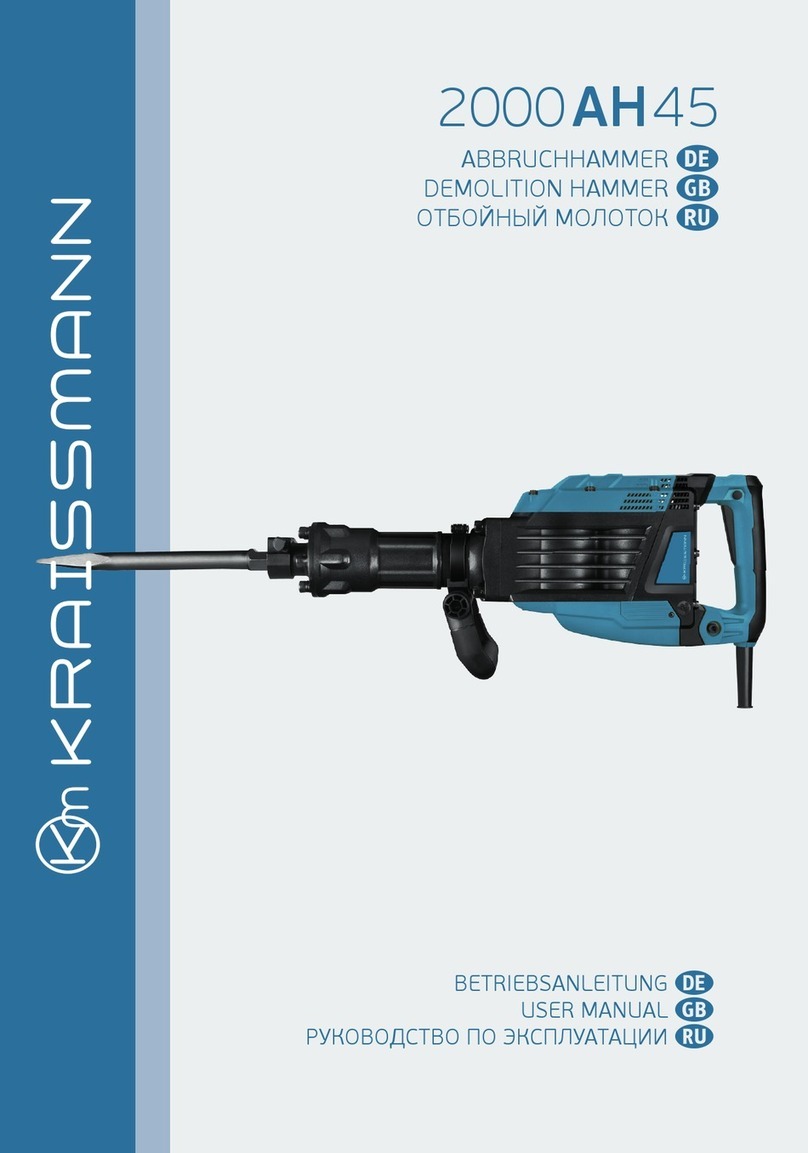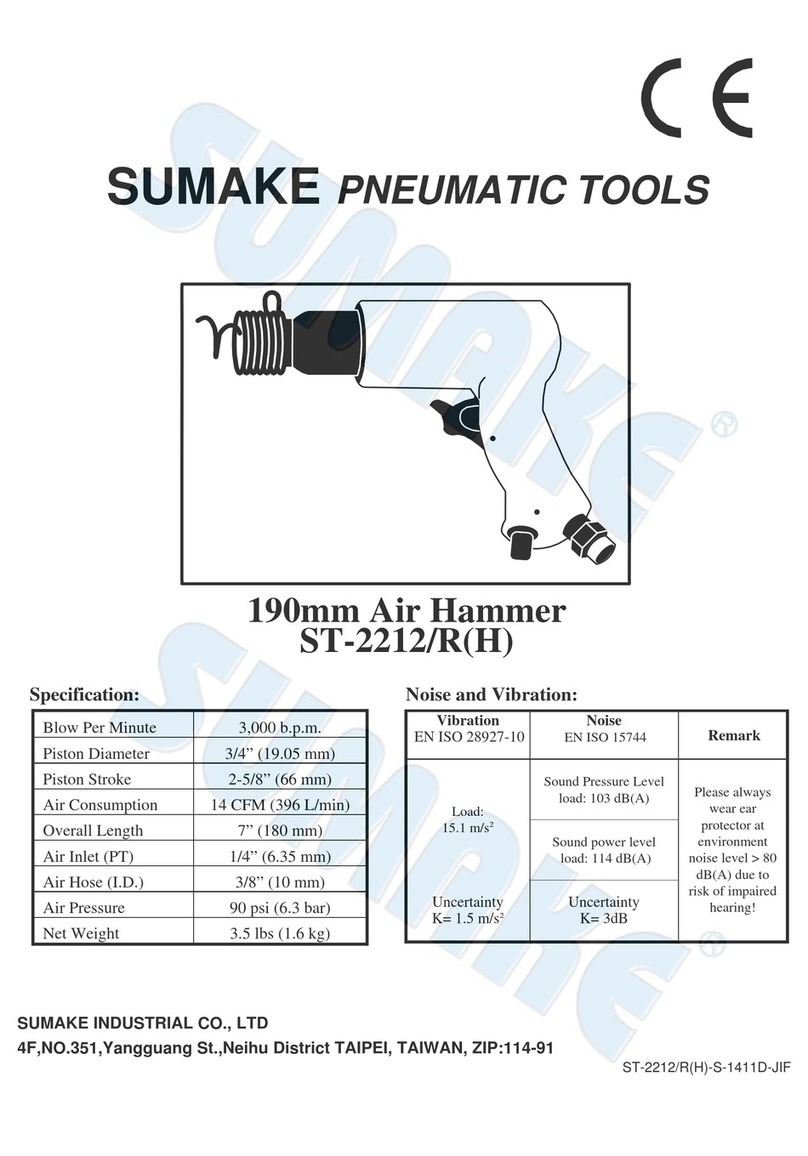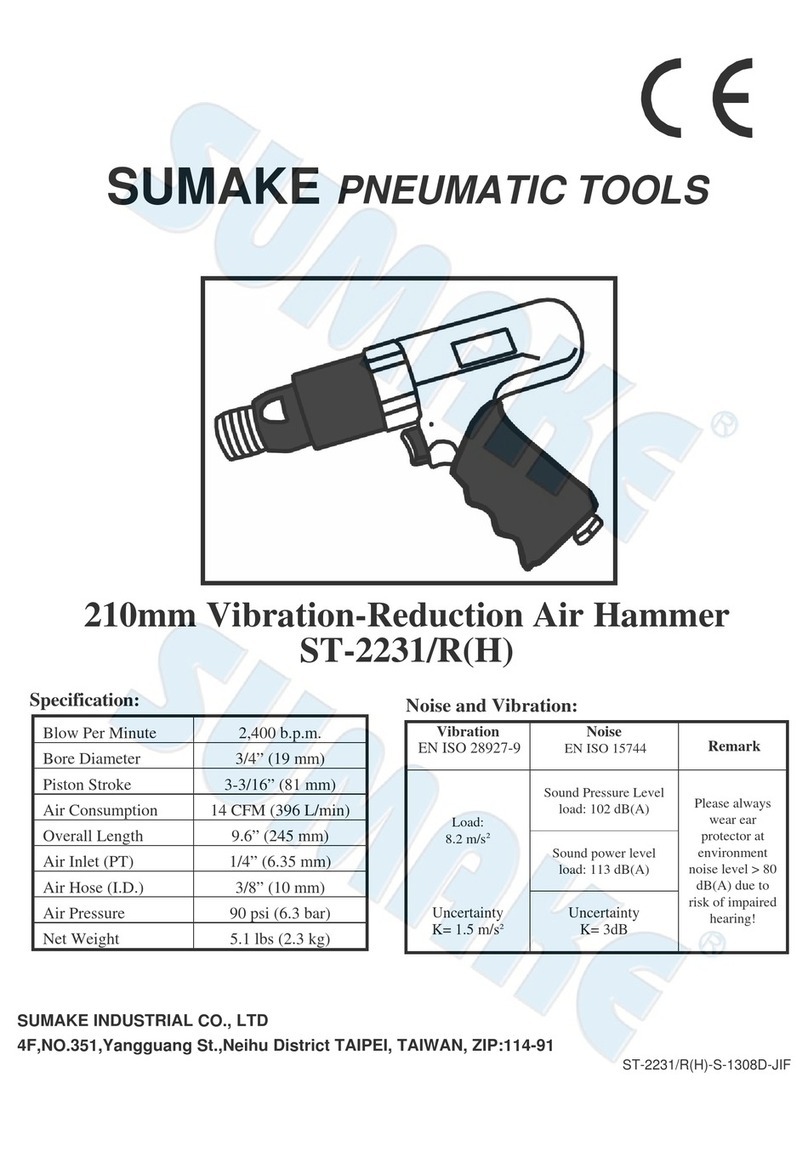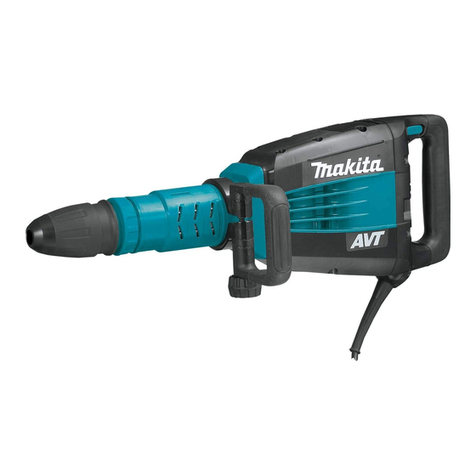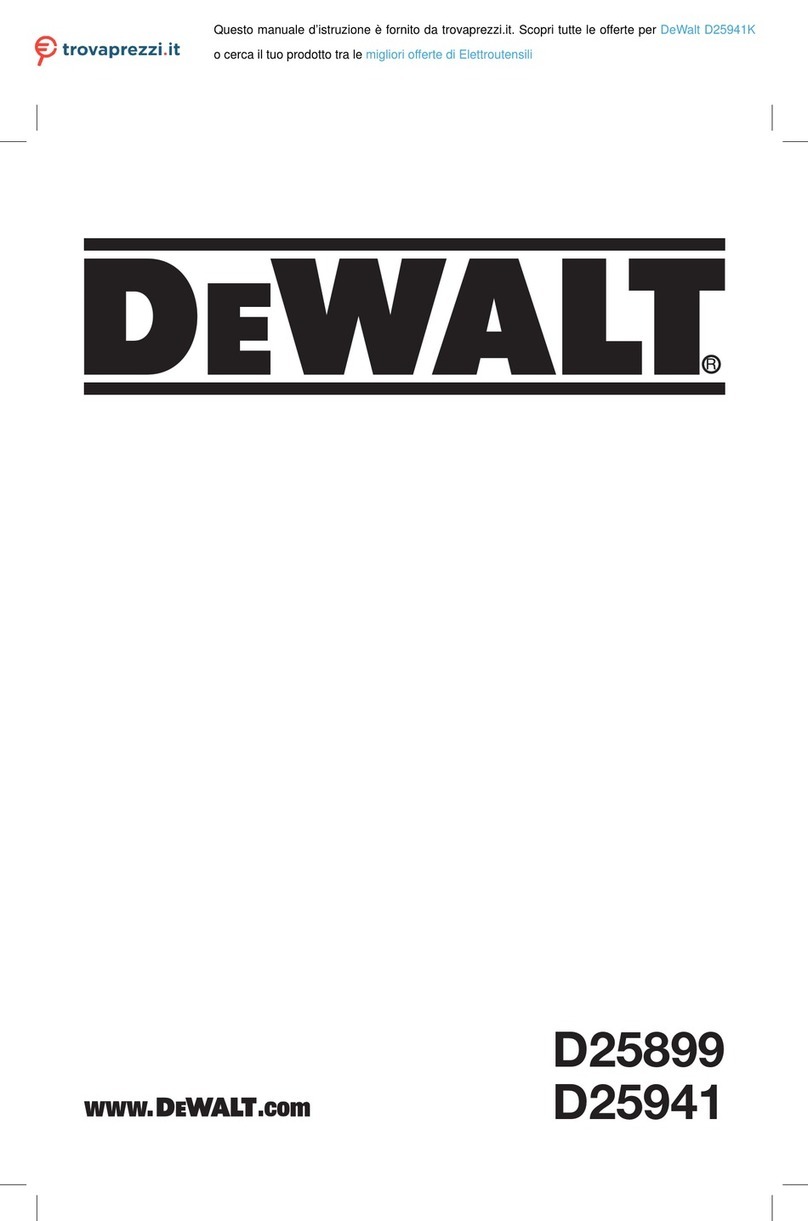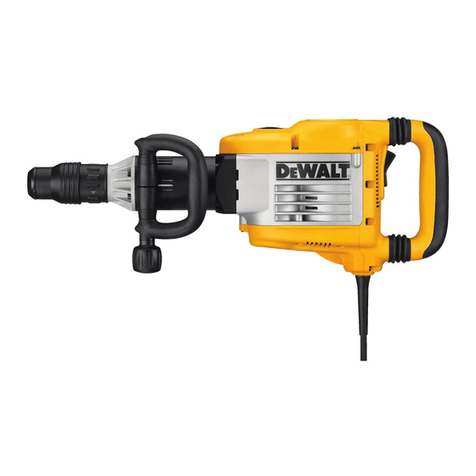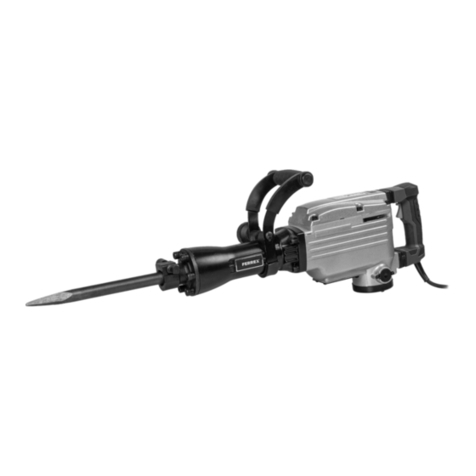
7
GENERAL SAFETY RULES
WARNING!
Read all instructions
Failure to follow all instructions listed below may result in
electric shock, fire and/or serious injury.
The term “power tool” in all of the warnings listed below
refers to your mains operated (corded) power tool or
battery operated (cordless) power tool.
SAVE THESE INSTRUCTIONS
1) Work area
a) Keep work area clean and well lit.
Cluttered and dark areas invite accidents.
b) Do not operate power tools in explosive
atmospheres, such as in the presence of flammable
liquids, gases or dust.
Power tools create sparks which may ignite the
dust of fumes.
c) Keep children and bystanders away while
operating a power tool.
Distractions can cause you to lose control.
2) Electrical safety
a) Power tool plugs must match the outlet.
Never modify the plug in any way.
Donotuseanyadapterplugswithearthed(grounded)
power tools.
Unmodifiedplugsandmatchingoutletswillreduce
riskofelectricshock.
b) Avoid body contact with earthed or grounded
surfaces such as pipes, radiators, ranges and
refrigerators.
Thereisanincreasedriskofelectricshockifyour
bodyisearthedorgrounded.
c) Do not expose power tools to rain or wet conditions.
Water entering a power tool will increase the risk
of electric shock.
d) Do not abuse the cord. Never use the cord for
carrying, pulling or unplugging the power tool.
Keep cord away from heat, oil, sharp edges or
moving parts.
Damagedor entangledcordsincreasetherisk of
electricshock.
e) When operating a power tool outdoors, use an
extension cord suitable for outdoor use.
Use of a cord suitable for outdoor use reduces
the risk of electric shock.
3) Personal safety
a) Stay alert, watch what you are doing and use
common sense when operating a power tool.
Do not use a power tool while you are tired or under
the influence of drugs, alcohol or medication.
A moment of inattention while operating power
tools may result in serious personal injury.
b) Use safety equipment. Always wear eye protection.
Safety equipment such as dust mask, non-skid
safetyshoes,hardhat,orhearingprotectionused
forappropriateconditionswillreduce personal
injuries.
c) Avoid accidental starting. Ensure the switch is
in the off position before plugging in.
Carrying power tools with your finger on the
switch or plugging in power tools that have the
switch on invites accidents.
d) Remove any adjusting key or wrench before
turning the power tool on.
A wrench or a key left attached to a rotating part
of the power tool may result in personal injury.
e) Do not overreach. Keep proper footing and balance
at all times.
This enables better control of the power tool in
unexpectedsituations.
f) Dress properly. Do not wear loose clothing or
jewellery. Keep your hair, clothing and gloves away
from moving parts.
Looseclothes,jewelleryorlonghaircanbecaught
inmovingparts.
g) If devices are provided for the connection of dust
extractionand collection facilities,ensurethese are
connected and properly used.
Useofthese devices can reduce dust related
hazards.
4) Power tool use and care
a) Do not force the power tool. Use the correct power
tool for your application.
Thecorrectpower tool will do thejobbetterand
saferattherateforwhichitwasdesigned.
b) Do not use the power tool if the switch does not turn
it on and off.
Anypowertoolthatcannotbecontrolledwiththe
switchisdangerousandmustberepaired.
c) Disconnect the plug from the power source before
making any adjustments, changing accessories, or
storing power tools.
Such preventive safety measures reduce the risk
of starting the power tool accidentally.
d) Store idle power tools out of the reach of children
and do not allow persons unfamiliar with the power
toolor theseinstructions to operatethe power tool.
Powertoolsaredangerousinthehandsofuntrained
users.
e) Maintain power tools. Check for misalignment or
binding of moving parts, breakage of parts and any
other condition that may affect the power tools
operation.
If damaged, have the power tool repaired before
use.
Manyaccidentsarecausedbypoorlymaintained
powertools.
f) Keep cutting tools sharp and clean.
Properly maintained cutting tools with sharp
cuttingedgesarelesslikelytobindandareeasier
tocontrol.
g) Usethepowertool,accessoriesandtoolbitsetc.,in
accordance with these instructions and in the
mannerintendedfortheparticulartypeofpower
tool,takingintoaccounttheworkingconditions
andtheworktobeperformed.
Useofthepowertoolforoperationsdifferentfrom
intendedcouldresultinahazardoussituation.
5) Service
a) Have your power tool serviced by a qualified repair
person using only identical replacement parts.
This will ensure that the safety of the power tool
is maintained.
PRECAUTION
Keep children and infirm persons away.
When not in use, tools should be stored out of reach of
children and infirm persons.
02EngH65SB2ChS 10.2.24, 15:577

